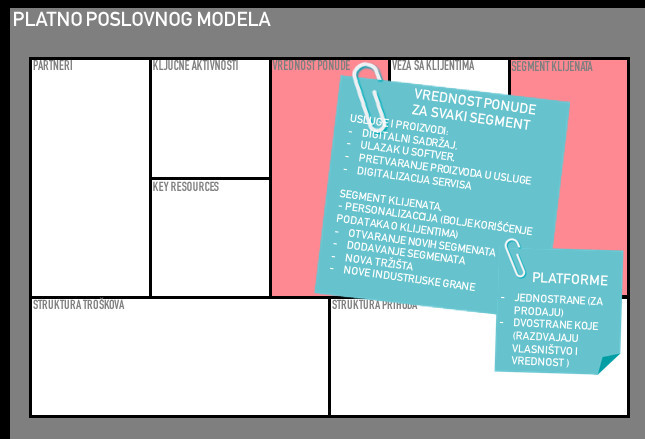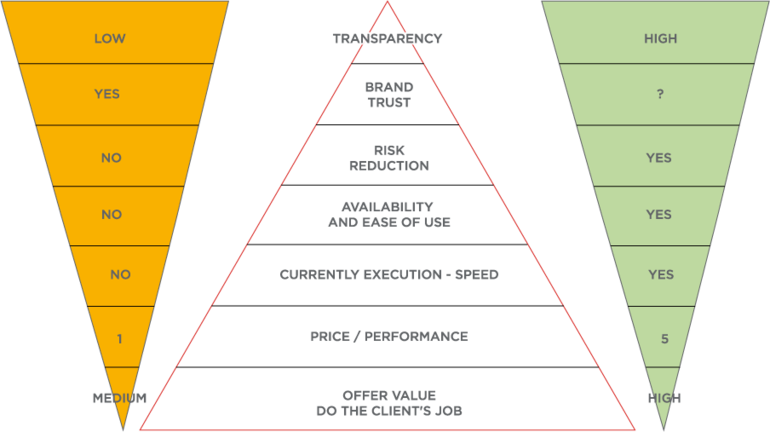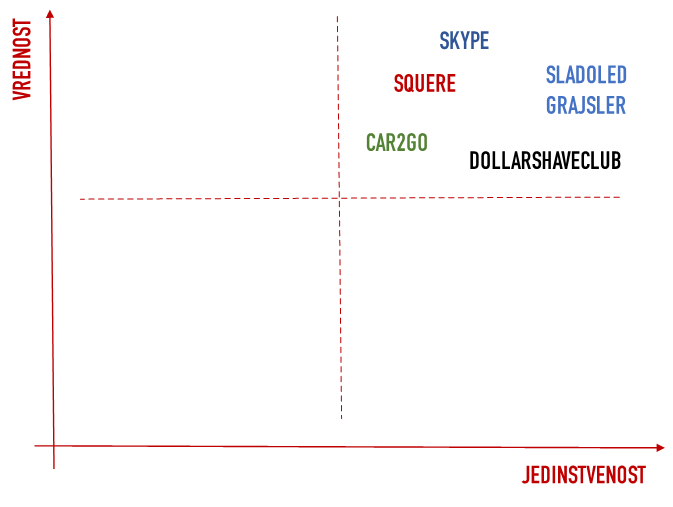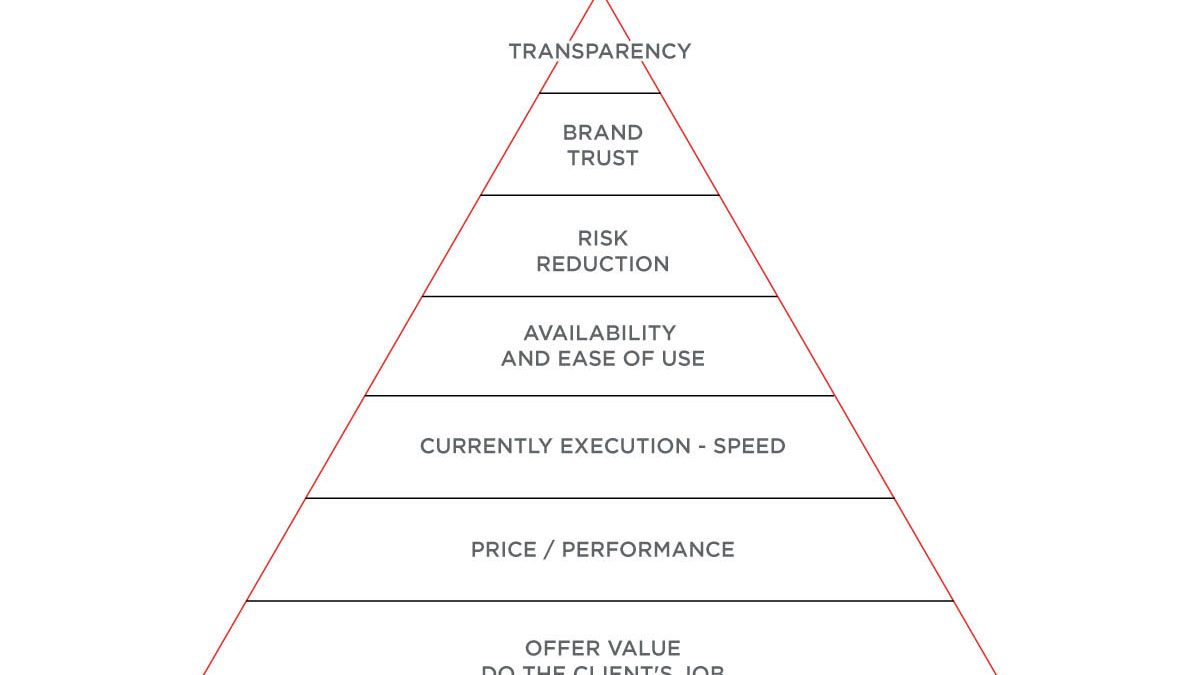Increasing value through product and service transformation

Increasing the value proposition can be realized by transforming physical products into digital products or services, or by transforming services into digital ones.
Article from Srpska ekonomija magazine
Digital transformation (Part two)
1) One of the most common transformations in practice is that of various types of content, such as news, newspapers, magazines, books, music and video content into digital, which can be distributed over the internet and thus eliminates the need for sending physical media to the user. There are many examples – online stores for music and movies, electronic books, subscription services for music and video content (m:radio, Netflix, Netfilm, D3go, Klik TV, Orion TV, Spotify, Apple Music). The Metropolitan Opera in New York offers opera on-demand on mobile phones or TV, or live broadcasts of their performances in movie theaters such as Cineplexx. This is the most widespread way of increasing the value proposition in digital economy. Many magazines have switched to digital form only, and even Encyclopedia Britannica, the oldest encyclopedia in English has stopped printing their issues after 242 years, and in 2010 switched exclusively to the online version.
2) Software products have great value, and the companies which have developed internal solutions are opening new lines of business and offering their software services or knowledge to other companies. Amazon has turned its cloud knowledge into a new, very successful line of business; Ocado company in the UK has developed their own platform for online sales, which they have offered to other companies. Creditech has done the opposite: first they have developed software to offer credit with built-in user checks through social networks and the Internet, and since the banks weren’t prepared to use the offered solution, they started offering cash credits themselves in countries in which people with credit history are few, and have achieved success very quickly. Another option in data and knowledge usage is how to analyze data in a specific branch of industry for value proposal increase purposes. Sears, a chain of department stores in the USA is in increasingly difficult times, and many foretell that the end is near, but at the same time they are developing a special department for data analysis and offering services to other companies.
3) Replacing the sales of a physical product with the service of using the product. Physical products from the IT and communications infrastructure spheres, which the companies used to buy, are being switched to subscriptions for a digital service. Servers – data storage systems – have been switched to data processing and storage services. This change significantly increases the value proposition: from a lower price and convenient payment methods, using only the capacity necessary in that moment, to better protection, security and ease of access to data from any location and with any device. Infrastructure as a service has expanded to include software platform services (platform as a service), and application solutions (software as a service). For these solutions in the cloud, management and data analysis are offered as a service. The same principle is used in switching other industrial products into a digital service. Tools can be rented out for a certain amount of time, Car2go offers vehicles and charges per minute of usage. The service of renting is done over the app and most business processes are automated. All of these are good ways to lower the price, change the method of charging, speed up availability and increase the value proposal.
4) Transforming services into digital services. From the eGovernment Portal (birth certificate issuing, new health card application, building permit application) to automated financial services (transferring money from one account to another, currency exchange, cash credit), stock market trading, investments, but also ticket purchasing, travel or transportation, movie and theater tickets, table booking in restaurants and many other services. The value proposition for customers is significantly increased because the prices are lower as a result of cost decrease for automated operational processes, and a part of this cost decrease is transferred to the customers. The time needed to go to these institutions is saved, as is the processing time, and in many cases the execution is immediate.
CUSTOMER SEGMENT AND INCREASING THE VALUE PROPOSITION
The changes that are happening under the influence of digital economy can provide access to new customer segments. Dollarshaveclub.com has, following their success the USA, began sales operations in Canada and Australia. The initial costs of entering a new market are much smaller than with the traditional approach, and the entry process itself is much faster. In the next development phase new products were added, again with smaller costs and greater speed, which increases the value proposition.
Car2go has, after addressing individual customers, addressed also companies, offering them special benefits: employees could use Car2go vehicles for a month, and the company would get a monthly bill detailing usage. For small and medium companies, this is a great help in business and efficiency.
Thanks to the digital business model, the opening new customer segments is much simpler and faster, and working with the existing segments can be significantly improved.
Based on the analysis of customer segments in successful digital business models, today we can differentiate several approaches to increasing value proposition:
1) Better use of data on existing customers. – in the digital business model, customer information is used for proposition personalization and significant increase in value proposition. Companies with an industrial business model are not organized enough for optimal usage of data and information they already possess. Telecom companies, banks and insurance companies have a large quantity of data about their customers, but they are not using them to increase the value proposition through personalization.
2) The offer is spreading onto new segments – the offer of software as a service over the internet has enabled for software solutions created for large companies to be offered also to medium and small companies. The sales and usage methods have diminished expenses and enabled for the new segments to use a subscription model for offered solutions, thus increasing the value proposition.
3) Based on customer information and better understanding of their priority tasks, new segments are created, and for each of them a proposition which resolves the relevant issues and completes the relevant tasks in a better way is defined. This increases the value proposition and enables growth. Vodafone in Kenya has divided users into 16 segments and created corresponding value propositions for each of them. The results were obvious.
4) Entering new markets – digital economy allows for easier access to new markets, so Telekom Srbija offers its services in Austria, focused on the segment of customers who value being able to communicate with users in Serbia under reasonable conditions (price, availability…). Additionally, it offers services of TV broadcasting, movies and sports over its app.
5) Switching to new industry branches – banks offer insurance, telecoms offer software products, digital content, and financial services. Amazon switched from selling books to various other products and services, created an offer of cloud services, and is now beginning health foods delivery. Google, Apple, and many others are working on the car of the future. The knowledge and competences they possess enable them to enter new industry branches, since they are all changing under the influence of digital economy.
PLATFORMS
A very good example would be Amazon, which enables partners to sell through their platform, and use other service as well, such as payment, supply chain organization, product storage and various and sales report analysis services. Telekom Srbija and VIP Mobile in Serbia and A1 in Slovenia use the “Marketplace” system to enable sales of partner products to their customers. eBay offers a platform for private sales, as does Limundo in Serbia. The value of these platforms depends on added value brought by the platform owner.
Another type of platforms are the ones that separate ownership of resources (products) and the value which can be actualized by their sale or usage and are connected to the sharing economy. Airbnb and Uber are examples of a platform that brings together two parties: one which offers its services and the other which is interested in using them. For these platforms to be successful, they must add value through their knowledge and expertise in a certain area, or by adding services and content which brings additional value for users of these services. Airbnb secures the property of the provider, offers a rating system of the offered houses, apartments and rooms based on user reviews, adds information on the surrounding area and attempts to make renting a bed an experience.
HOW TO MEASURE THE VALUE PROPOSITION
The value proposition is measured by rating its characteristics and by comparing them in various business models, above all in the industrial and digital models.
The first characteristic is the price in relation to the performance of the proposition. Just as Dollarshaveclub.com has significantly reduced the price and turned it into a subscription, or as Skype has enabled free calling through their program, many other companies have offered a much more favorable ratio of price and service performance. The business models in many branches of industry are either anticipating or already experiencing the blow of new digital business models. This is very noticeable in the travel industry, air travel, room, apartment and house rental, media (newspapers and magazines, books, music and movies), sales and wholesales, education, auto industry, health services, administration and many others. The characteristics we should begin with and check the value proposition are given in image 2. This is a starting list, and depending on the industry branch and proposition type (whether it includes services or products) the characteristics are changing, being added and subtracted.

Image 2. Characteristics of value proposition to check
Image 3 shows the comparison of value proposition of purchasing a car through a dealer versus the Car2go service for the customer segment they address.

Image 3. The comparison of value proposition of buying a car (left) versus the Car2go service (right) for one customer segment.
NEXT STEPS
When there is an understanding for the changes in the value proposition by using digital economy processes, the innovation of the business model can continue by analyzing the remaining 7 elements of the business model (image 1) and by looking for innovation and changes to increase the value proposition. We should always include the innovations provided by digital economy. For example, many basic activities can be automated (customer sign-up, car booking, accounting for vehicle use and billing…) and therefore processes are sped up and customer satisfaction is increased, which increases the value proposition. There are two sides to consider when we are talking about brands and trust. Car manufacturer brands have more trust at first, but for customers who are satisfied with the Car2go service, trust will very quickly be generated. In many cases, companies which do business according to industrial business models consider their strongest defense to be the values of brand and trust. Digital economy greatly alters the meaning and characteristics of both brand and trust. Trust, in digital business models, includes openness and transparency in every aspect of communication and collaborations between the company and the customer, and enables direct communication between customers. Amazon is always the best example. Not only does Amazon offer products with customer comments on price, product quality, shipping and support, but they also offer the same products from other providers with direct comparison of price and other characteristics. The customers share their product ratings, and also help other customers by providing advice and answers to any questions about any aspect of the product. Trust in digital economy is generated if you apply these examples from Amazon to your proposition, if it’s transparent for the customer, without hidden costs or ‘fine print’ in the contracts. It must be easy to compare your product with the competition, and if you enable the customers to critique of praise your offer, prices, shipping and support in a transparent way, so it is accessible to all interested parties, no matter whether they are customers or potential customers.
This really brings your customer to the focus of your business instead of your profit. This is why it is necessary to keep reevaluation your value proposition.
The simplest way to compare value propositions is to look at two components: uniqueness and value. If the proposition is unique and has great value for the customer segment, it’s a good sign of success. If the proposition has no value for the customer, then this project should be abandoned, even if it is unique, because it is not useful. If your proposition is useful to the customer but not unique, the only criteria is the price, and if this is acceptable for the company, to only be competitive through price, this is fine. There is a chance here that by using some of the possibilities of digital economy the value proposition will increase and become unique in the market segment. Car2go is unique and has value for the customers, as is Dollarshaveclub.com and the rest we cited as examples, but many companies with a great number of employees are losing their uniqueness and added value for the customer today. For them it is necessary to start the transformation as soon as possible. On image 4, you may write in where you think you company’s proposition is. If your proposition is not in the upper right space, conquer your fear of change and start the process of analysis and transformation.

Image 4. Uniqueness and value of the proposition.
The solution could be based on using multiple business models. The old but still profitable business model can be improved, thus saving the profitable part of business, and the newly innovated, digital business models can be added separately, because testing new business models is much faster and simpler in the digital economy.
New Frontier Group and Saga assist their customers in the process of digital transformation from current state and business model analysis, new solutions based on practical results in various industry branches, through joint creation of the digital strategy and definition of execution activities, to project management and actually execution of planned activities.
Branislav Vujovic is founder and also president of New Frontier Group and has overall responsibility for the New Frontier Group, with special focus on Innovation, M&A strategy, group strategy and investor relationship.
[/kswr_iconboxinfo]

